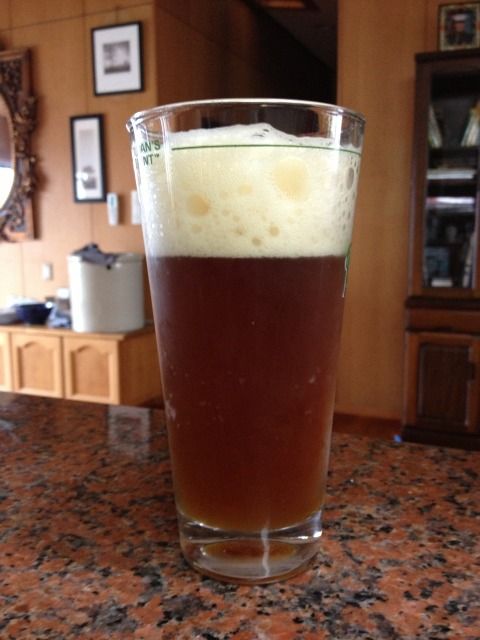Ferment 72 hours... 72 hours = 3 days. And to think we tell people to leave it in the primary for 7 times that.
I am rather intrigued as well. let us know how it turns out.

45_70sharps said:Cool story. I'm interested in how the beer turns out.
Very interesting recipe. It would be interesting to see an OG reading and a FG reading on this.
Ferment 72 hours... 72 hours = 3 days. And to think we tell people to leave it in the primary for 7 times that.
I am rather intrigued as well. let us know how it turns out.











Cool story. I'm interested in how the beer turns out.
Very interesting recipe. It would be interesting to see an OG reading and a FG reading on this.
Elucidate me if you can - is "dark malt" a historical term that has a readily identifiably meaning; i.e. was there some substance from back in the day called "dark malt" that came as a liquid?
OG was 1.06something. i don't know why i didnt measure an FG before and after priming it. that would have been useful for calculating the ABV. oh well, next time.
Malt extract had already been produced in America as far back as 1896. In fact, Muntons in Britain started importing extract from the USA in 1919. (It did not take over Fison’s until 1934.) And, as a result of a sugar shortage in the First World War, the US government had pushed the use of malt extract as a sugar substitute in baking. What this meant was that, at the onset of Prohibition, a retail distribution network for malt extract was already in existence. So, many brewers jumped on this bandwagon, including such well-known names as Schlitz, Miller and Anheuser-Busch, with the latter introducing a hop-flavored extract in 1925. And, of course, Pabst — whose Blue Ribbon extract remained as a homebrewer’s standby long after Prohibition’s demise. Indeed, Blue Ribbon stayed around until recent times, when it became the Premier brand and eventually ceased to be made in the US.

I may be doing something wrong, but If I know the OG before pitching yeast and the FG before I put in the bottling sugar, that is close enough for me. I'm not selling it. Close only counts in horseshoes, hand grenades, nuclear warfare, and calculating ABV? The bottling sugar should add alcohol ever so slightly.
Dark Malt Extract? BYO had this to say - along with a whole lot more info....
Now it is starting to come back. I'm pretty sure that is what dad used. Blue Ribbon Extract.
Yeah, that's it.
This is what it looked like.
The bigger question I had watching that show was, could hooch be made with silage?

My dad had a 5 gallon stone crock and I remember seeing the Blue Ribbon extract cans and maybe EDME.
truth be told, its tastier than i expected

45_70sharps said:Nice head on that.
So, better than expected, what's it like? Is it something that you would make again if it weren't an old family recipe?
Yeah, what he said! :0)
Nice head on that.
So, better than expected, what's it like? Is it something that you would make again if it weren't an old family recipe?
45_70sharps said:I like the name. You must be near my age with a name like Molly Hatchet.
They were big in the 70's and early 80's when 38 special and Lynyrd Skynyrd were big.
Maybe between your mid 40's and early 50's?
Nice head on that.
So, better than expected, what's it like? Is it something that you would make again if it weren't an old family recipe?
its pretty clear, but with sediment in the bottom, so if i dont nail the pour, it clouds up. more time in the bottle wont help much with thatIt should clear more in the bottle with time, if it lasts long enough.
its pretty clear, but with sediment in the bottom, so if i dont nail the pour, it clouds up. more time in the bottle wont help much with that
its pretty clear, but with sediment in the bottom, so if i dont nail the pour, it clouds up. more time in the bottle wont help much with that
